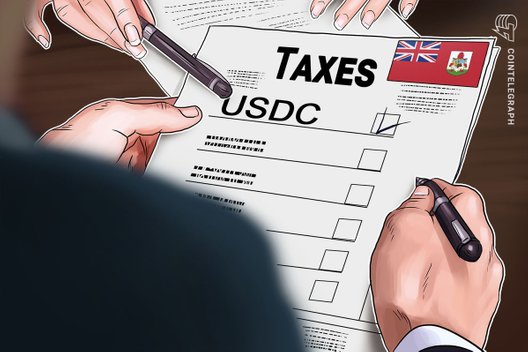1.
What makes crypto trading bots so special?
They can automatically execute trades on your behalf – and with new features added to these programs all the time, they are continually becoming more sophisticated.
Trading bots often use algorithms to detect trends and determine when trades should be made. Such software has been a mainstay in forex, equities and commodities markets for several years – and now, there has been a competition into the crypto world.
Whereas shifts in price for old-fashioned markets can be down to fractions of a cent, swings in prices in the cryptocurrency world can be considerably more dramatic – 24 hours a day. For traders, the right crypto trading bot offers an opportunity to have a handle on the market around the clock and protect their assets if they’re asleep or away from their desks.
Some of these bots are free, while others command substantial fees on a monthly basis depending on the number of features a user requires. What makes a piece of software special is its usability, the level of analysis it offers to traders, and the number of exchanges on which trades can be made.
When done well, bots can be a tool that help crypto traders stay ahead of the curve when it comes to market movements. They can either perform transactions based on the parameters of developers or the traders themselves, and some provide the opportunity to copy more established traders and analysts – and assess their track record in full.
2.
How do they know what to do?
The trades are based on analysis rather than emotion, and this can be beneficial for traders susceptible to the odd bout of panic buying.
Off-the-shelf bots usually work on the basis of set algorithms which are often configured by developers. As such, their success often hinges upon the creator’s understanding of how the crypto world works. These tools can often be frustrating for advanced traders who have their own interpretations of the market, as some pieces of software have a limited scope for personalization. Bots can’t buy from a hunch like humans can. They buy at the hands of technical indicators. If your chosen indicators indicate a buy opportunity, it will follow them blindly if configured to do so. Unless you link your bot to another professional trader (which is possible) you must learn how to conduct technical analysis yourself.
When it comes to selling the coins trades can be triggered when the profit target is met, or a “stop loss” – where cryptocurrencies are automatically sold if they fall beyond a set value, or by a pre-defined number of percentage points. They also use other features like “trailing stop-loss,” which track the price of a position upwards. If after a certain degree of profit, the coin begins to decline, the bot will automatically sell it in profit.
In the end, the benefit of the bot is that it can both scout new opportunities using professional indicators, and, at the same time, keep a tight and rational look at all the current investments. Greed often stops a trader from selling on time, this is can be prevented with a bot.
Their ability to successfully turn around profits has however been limited by the fact that market movements often hinge upon developments in the news and even single tweets from crypto influencers. Given how bots are relying on raw data and historical performance, expecting these tools to act upon current events can be something of a tall order.
3.
Can I trust a trading bot?
The right tool can prove indispensable for a savvy trader, but human input is still essential to maximize profits and prevent dizzying losses.
It’s important to find a reputable trading bot that’s free of coding errors and keeps downtime to a minimum. Bots should also be integrated with features that shield users against flash crashes – an all-too-common occurrence in the crypto world. There have been cases where seemingly credible trading bots have turned out to be scams, with investors subsequently unable to withdraw money from their accounts. Always be sure to go for a service that has been running for a while – and be wary of companies that make bold claims about how much money you could make.
Ultimately, you should remember that trading bots are not suitable if you’re after a passive income. Getting the right results from such software takes time and effort – and often involves backtesting a strategy on historical data to see how certain trades would have panned out. You should always use small amounts of capital to start off with until you get accustomed to a new system. On the bright side, there’s far less risk for human error when you are using a bot, as automated trading tools are incapable of making costly typos.
4.
Will trading bots be better than humans one day?
Artificial intelligence and machine learning help trading bots constantly develop and evolve, but there’s still a long way to go to beat human instinct.
It’s unlikely a bot will ever be able to detect a catastrophic threat to the crypto world, or gauge the significance of emerging technologies. Also, it’s worth bearing in mind that, if everyone was to use the same strategy put forward by a trading bot, no one would have that all-important edge which results in profitable moments.
That said, some custom-made bots are being bit with the capability of scouring social media for news using keywords. Although this could help flag up a crucial development to an investor, it would be dangerous for the bot to act on its own in case said post turns out to be “fake news” – or a rather over optimistic assertion from a rookie crypto startup.
As a result, some bots are trying to achieve the best of both worlds. Services like Cryptohopper enable investors to buy and sell automatically using professional indicators, the main form of technical analysis. This bot also provides access to third-party technical analysts, who send out alerts about promising investments which the bot can act upon automatically on a user’s behalf. This allows more room for the human touch that is required for fundamental analysis. It could be argued that such a hybrid can give a much-needed edge in terms of quick transactions.
5.
How do I set up a crypto trading bot?
The main task is to hook up your bot with the crypto exchanges you use the most.
In order to do this through Cryptohopper, you usually need to create an API key on your chosen exchange – such as Binance or Huobi. This can then be pasted onto the bot’s website, forging a connection between the two.
You can then apply different TA indicators, which tell your hopper when to buy or sell your chosen coins and you can keep an eye on how your positions are performing through the stats page. Based on past data, you can test other strategies to see how they would have performed – and then decide whether you want to follow through with them.
If you want to base your strategies on what’s recommended by third-party technical analysts – known as Signalers on the platform – you can browse them based on the exchanges they operate on and subscribe (sometimes for a fee.)
6.
What should I do to get the most out of my crypto bot?
As we’ve mentioned, doing your homework and backtesting strategies can be a helpful indication of whether certain trades will succeed or fail.
That said, it’s worth remembering that past performance isn’t always an accurate reflection of what will happen in the future.
It’s always worth keeping an open mind about the coins you invest in, and keeping track of the latest developments in the market. That’s something Cointelegraph’s comprehensive price analysis – published on a regular basis – can help you with.
Finally, remember that it’s crucial to check out the performance reports of analysts before you take the plunge and follow their recommendations. Reputable experts will always provide thorough details of their past results, as well as how they are performing currently. Some also have their own websites explaining their methodologies and details about the technology that underpins their trading assessments.
Disclaimer. Cointelegraph does not endorse any content or product on this page. While we aim at providing you all important information that we could obtain, readers should do their own research before taking any actions related to the company and carry full responsibility for their decisions, nor this article can be considered as an investment advice.









